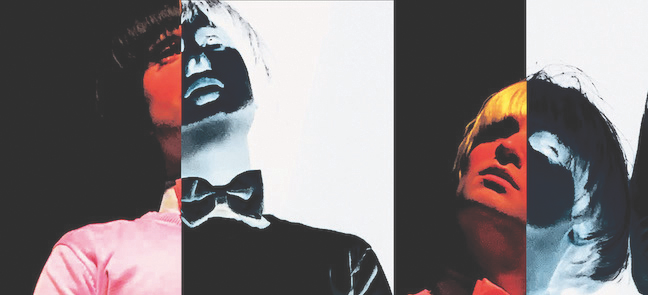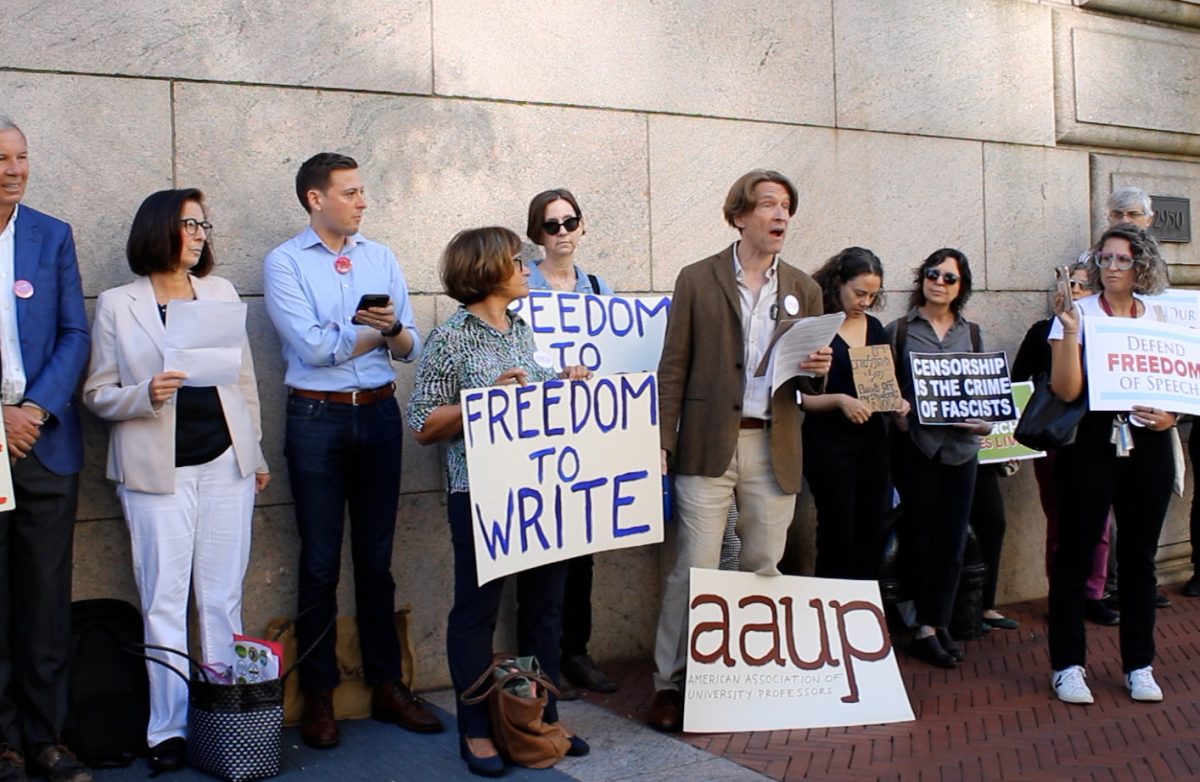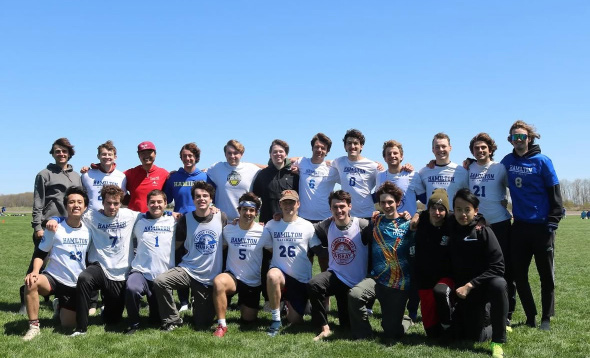
On Friday, Sept. 13 in the Barrett Theatre, the Theatre Department presented one of the first performances of the academic year with
A Doll’s House, Part 3
, created by Patrick Foley and Michael Breslin ‘13.
Foley and Breslin, who are known professionally as Michael + Patrick, are both the creators and stars of the show. Addressing the audience, Breslin thanked faculty members Craig Lattrel, Nancy Rabinowitz, and the late Carole Bellini Sharpe for supporting him as a student on the Hill.
A Doll’s House, Part 3
is an experimental sequel-to-a-sequel of Henrik Ibsen’s original play,
A Doll’s House
. The show uses media, movement, and improvisation to follow the characters’ lives after the end of
A Doll’s House
. The piece goes beyond any expectations of its title, exploring, as dramaturg Ariel Sibert wrote in the program, “Trauma, maybe… ‘Queer Performance.’ Women’s Work. Emotional labor. Sweat. Excessive emotions. Vocalizations of all kinds, whispered or full throated.”
The play follows the three children of Nora, the mother who, in
A Doll’s House
, leaves her family behind. The three siblings, Ivar (Patrick Foley), Bob (Michael Breslin), and Emmy (Anna Crivelli) reconcile with their absent mother over the course of the play, though much of it is blurry and practically nonexistent by the way of a formal plot.
Now teenagers, the siblings are experimental performance artists in a bright, sensory-overloaded era of ASMR and beauty tutorials. It’s an era where YouTube is a confessional and a droll Content Kween (Catherine María Rodriguez) teaches her subscribers how to get a flaming smoky eye before unearthing her trauma of being waterboarded as a child. Her face, illuminated by a ring light as she peers into a webcam, is projected onto the back wall of the theatre. Her eyes tear up as she puts on a wig.
In disparate moments ranging from creating ASMR on screen, to dancing the Tarantella, to rapping at a camera, the siblings are caught up in an “excess of reality.” They have a constant need to create in order to overcome the sense of abandonment they struggle with. Their trauma anchors them in a stage of adolescence in which every fall is fatal, every bruise is permanent, and every moment is life-or-death.
The play is bizarre, delightful, homoerotic, and jarring; it brings the surreal deliberately close to the real. At one moment, Ivar sits on a bench, peers into a camera that zooms slowly into his face, and lip syncs to “If I Loved You” from Carousel for four minutes. A single tear falls from his left eye.
Moments like this are simultaneously absurd and strikingly familiar because we yearn for moments when we may embrace the theatrical. We play a sad song and look out the car window pretending to be in a music video. We stare at ourselves in the bathroom mirror at 2 AM, desiring a close-up shot that only stars will ever receive. This play draws out parts of ourselves we might never want to see and embraces this shame.
After the play, the four actors and Sibert (the dramaturg) answered questions from the audience. One insight into their workshopping process Rodriguez mentioned was the idea that one “cannot edit until you create material.” The creators said they gathered material from personal testimonies, exercises and prompts, improvisation, and whiteboards full of notes. They did not use a written script or a director, but rather create, direct, and act in the same motion.
The following day, on Saturday Sept. 14, Foley and Breslin held a devising workshop for Hamilton theatre students, wherein the students created short pieces using elements of music, physical outbursts, social media, and personal anecdotes. The pair were particularly interested in humiliation as theatre, as well as modern media such as Vine and TikTok. Once the students presented their work, Michael and Patrick workshopped these pieces to help students develop them for the future.
Additional work by Michael + Patrick’s can be found at michaelandpatrick.com.

















